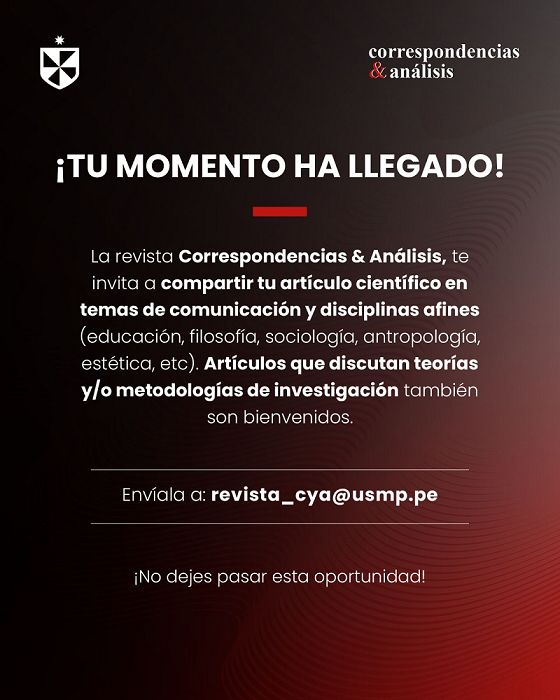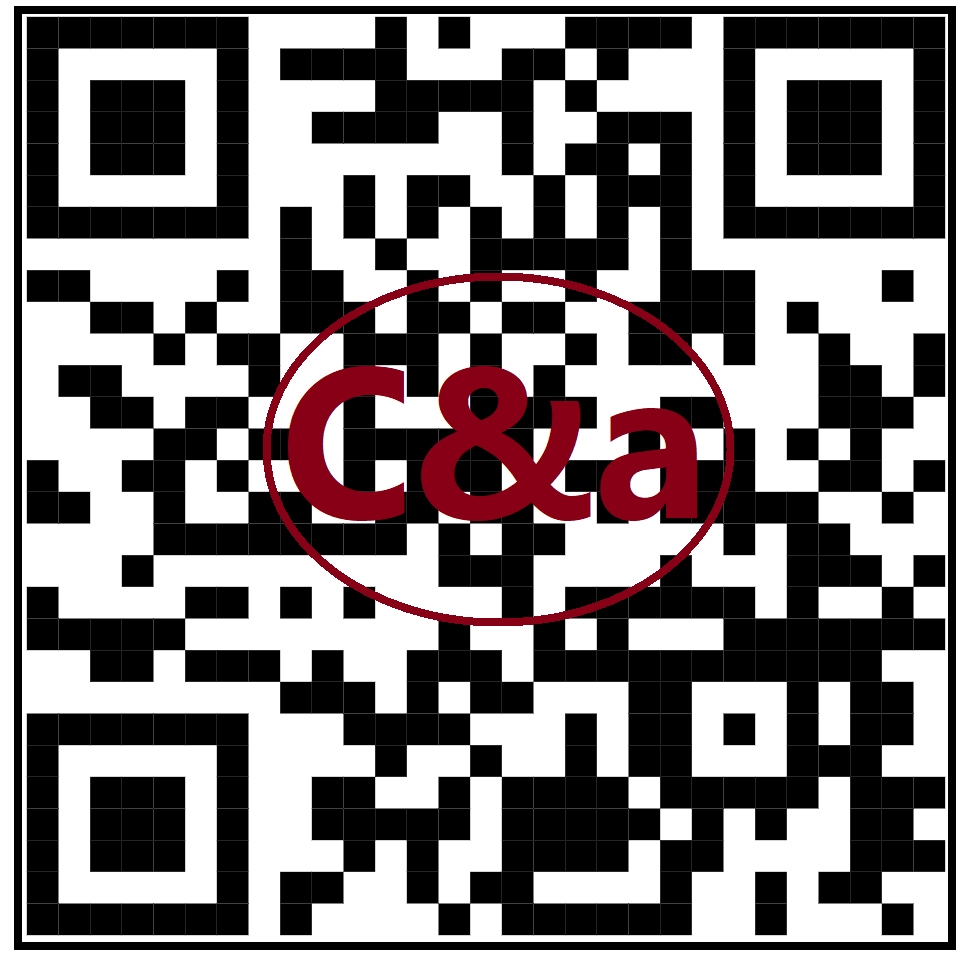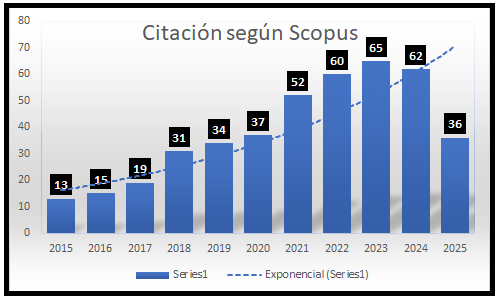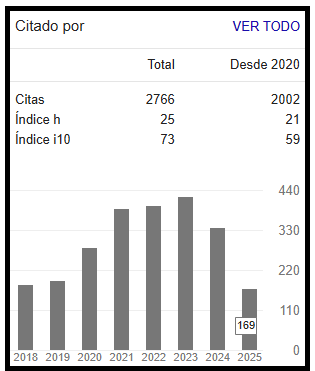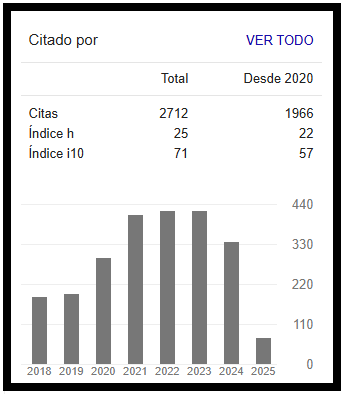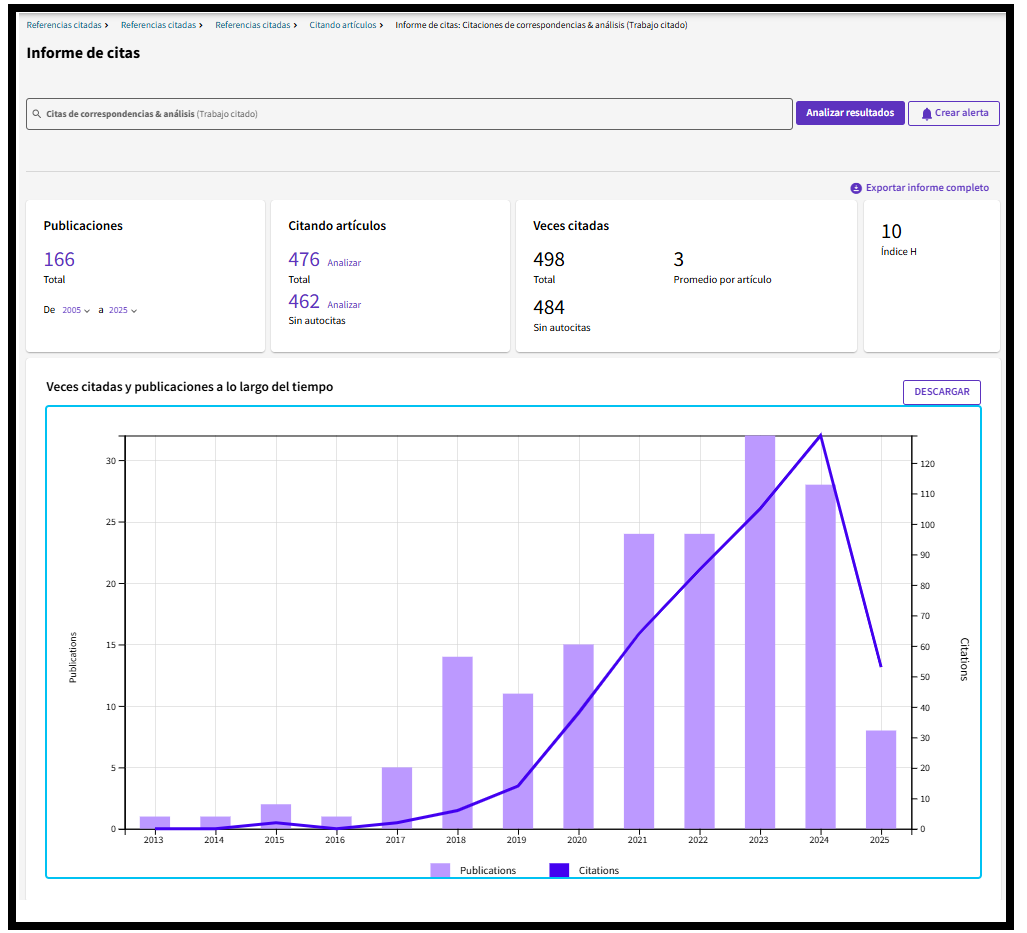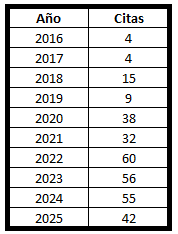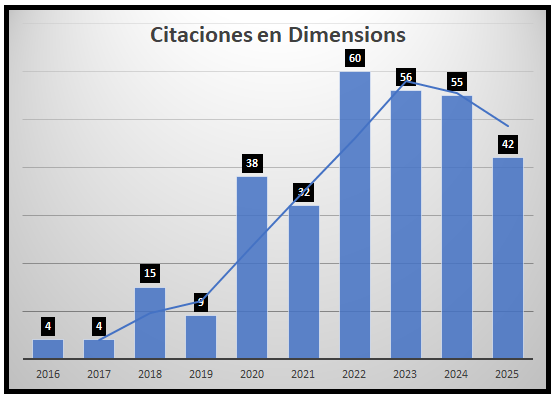Tratamiento informativo de candidatas presidenciales: una propuesta desde el framing
DOI:
https://doi.org/10.24265/cian.2019.n10.07Palabras clave:
Encuadres noticiosos, Candidatas presidenciales, Comunicación política, Género, Género y política, Tratamiento periodístico, Visibilidad, Campañas políticasResumen
El artículo presenta una revisión de la literatura de las formas de abordaje periodístico hacia las candidatas presidenciales. Para este objetivo, se englobaron en siete encuadres de cobertura: a) visibilidad, b) reiteración del género, c) mediatización de la esfera íntima, d) personalidad, e) agenda temática, f) tonalidad y g) particularidades del medio. Finalmente, se formula una propuesta de operacionalización para cada uno de los encuadres que dé pie a futuras investigaciones que aborden a estas figuras políticas. Se conclu- ye que estas son representadas desde su esfera íntima y feminidad, caracterís- ticas que distan de ser las culturalmente apropiadas para el debate en la arena pública y política.
Métricas
Descargas
Referencias
Aalberg, T. & Jenssen, A. T. (2007). Gender stereotyping of political candidates. An experimental study of political communication. Nordicom Review, 28(1), 17-32. https://doi.org/10.1515/nor-2017-0198
Adams, K. S. (2011). The naked truth: the media's role in undermining female political candidates. International Journal of Politics and Good Governance, 2(2). Retrieved from http://onlineresearchjournals.com/ijopagg/art/86.pdf
Aday, S. & Devitt, J. (2001). Style over substance: newspaper coverage of Elizabeth Dole's Presidential Bid. The International Journal of Press/Politics, 6(2), 52-73. https://doi.org/10.1177/108118001129172134
Agostinho Martins, C. I. (2013). Mulheres, Política e Visibilidade Mediática. As Lideranças de Maria de Lourdes Pintasilgo e de Manuela Ferreira Leite (Women, Politics an Media Visibility. The Leadership of Maria de Lourdes Pintasilgo and Manuela Ferreira Leite). (Doutoramento em Ciências de Comunicação). Lisboa: Universidade Nova de Lisboa. Retrieved from https://bit.ly/32GZxbL
Allen, R. E. (2016). Gender, media, and the White House: an examination of gender in the media coverage of Hillary Clinton, Bernie Sanders, and Ted Cruz. Political Science Honors Projects, Paper 55. Retrieved from https://bit.ly/2OaATNf
Anderson, K. & Sheeler, K. (2005). Governing Codes. Gender, Metaphor, and Political Identity. New York: Lexington Books.
Anzaldúa, G. (1987). Borderlands/La Frontera: The New Mestiza. San Francisco: Aunt Lute Books.
Araujo, C. & Alves, J. E. D. (2007). Impactos de indicadores sociais e do sistema eleitoral sobre as chances das mulheres nas eleições e suas interações com as cotas (Social indicators and electoral system's impacts on women's chances in elections and their interactions with the mechanism of quotas). Dados, 50(3), 535-577. http://dx.doi.org/10.1590/S0011-52582007000300004
Arendt, H. (2009). La Condición Humana (The Human Condition). Buenos Aires, Argentina: Paidós.
Aruguete, N. (2011). Framing. La perspectiva de las noticias. (Framing. News perspective). La Trama de la Comunicación, 15(1), 67-80. Retrieved from https://latrama.fcpolit.unr.edu.ar/index.php/trama/article/view/52
Atkeson, L. & Krebs, T. (2008). Press coverage of mayoral candidates: the role of gender in news reporting and campaign issue speech. Political Research Quarterly, 61(2), 239-252. https://doi.org/10.1177/1065912907308098
Banwart, M. C., Bystrom, D. G., & Robertson, T. (2003). From the primary to the general election. A comparative analysis of candidate media coverage in mixed-gender 2000 races for governor and U.S. Senate. AmericanBehavioral Scientist, 46(5), 658-676. https://doi.org/10.1177/0002764202238491
Benhabib, S. (1992). Situating the Self: Gender, Community and Postmodernism in Contemporary Ethics. Nueva York, Estados Unidos: Routledge.
Berrocal Gonzalo, S. & Quevedo Redondo, R. (2014). La representación de los políticos en revistas femeninas de alta gama. Un estudio de caso (The political representation in high-end women magazines: a case study). Communication Papers, 3(5), 61-73. Retrieved from https://bit.ly/2McErvI
Bertrand Pearce, A. (2016). A Content Analysis of Media Coverage of Female U.S. Senate Candidates from the South. (Master of Science). Lafayette: University of Louisiana.
Bijker, A. (2015). Gender Differences in the Dutch Media. Three Mixed-Gender Elections Investigated. (Master in Political Science). Leiden: Universiteit Leiden. Retrieved from https://bit.ly/2Yj5wUG
Bryant, L. (2014). Gender Balanced or Gender Biased? An Examination of News Coverage of Male and Female Governors. (Doctor of Philosophy). Albany: State University of New York at Albany.
Bystrom, D. G., Robertson, T. A., & Banwart, M. C. (2001). Framing the fight. An analysis of media coverage of female and male candidates in primary races for governor and U.S. Senate in 2000. American Behavioral Scientist, 44(12), 1999-2013. https://doi.org/10.1177/00027640121958456
Carlin, D. B. & Winfrey, K. L. (2009). Have you come a long way, baby? Hillary Clinton, Sarah Palin, and sexism in 2008 campaign coverage. Communication Studies, 60(4), 326-343. https://doi.org/10.1080/10510970903109904
Cassidy, K. (2012). Bringing the Frame into Focus: How Cable News Pundits Protect the Glass Ceiling. (Master of Arts). Amherst: University of Massachusetts.
Clark, K. (1992). The linguistics of blame: representations of women in The Sun's reporting of crimes of sexual violence. In M. Toolan (Ed.), Language, Text and Context: Essays in Contextualised Stylistics (pp. 208-224). London: Routledge.
Conroy, M., Oliver, S., Breckenridge-Jackson, I., & Heldman, C. (2015). From Ferraro to Palin: sexism in coverage of vice presidential candidates in old and new media. Politics, Groups, and Identities, 3(4), 573-591. https://doi.org/10.1080/21565503.2015.1050412
Costa, L. D., Bolognesi, B., & Codato, A. (2013). Variáveis sobre o recrutamento político e a questão de gênero no Parlamento brasileiro (Variables on political recruitment and gender in the Brazilian Parliament). The Observatory of Social and Political Elites of Brazil, (7), 1-20. Retrieved from http://observatory-elites.org/wp-content/uploads/2012/06/wp-observatory-n.7-2013.pdf
Dan, V. & Iorgoveanu, A. (2013). Still on the beater path. How gender impacted the coverage of male and female Romanian candidates for European office. The International Journal of Press/Politics, 18(2), 208-233. https://doi.org/10.1177/1940161212473508
De Botton, A. (2001). Sobre la ineptitud cultural (About moral ineptitud). In Introducción a la Filosofía de la Cultura (pp. 145-163). Ciudad de México: Taurus.
De Fontcuberta, M. (1990). El discurso de la prensa del corazón (The speech of the celebrity press). Anàlisi, 13(1), 53-72. Retrieved from https://www.raco.cat/index.php/analisi/article/viewFile/41093/89101
De Vreese, C. & Boomgaarden, H. (2003). Valenced news frames and public support for the EU. Communications, 28(4), 361-381. https://doi.org/10.1515/comm.2003.024
Ditonto, T. (2014). The outsider and the presidency. Mediated representations of race and gender in the 2008 presidential primaries. In G. R. Daniel & H. V. Williams (Eds.) Race and the Obama Phenomenon: The Vision of a More Perfect Multiracial Union. Mississippi: University Press of Mississippi. https://doi.org/10.14325/mississippi/9781628460216.003.0010
Dunaway, J., Lawrence, R. G., Rose, M., & Weber, C. R. (2013). Traits versus issues: how female candidates shape coverage of Senate and gubernatorial races. Political Research Quarterly, 66(3), 715-726. https://doi.org/10.1177/1065912913491464
Ehrlich, S. & King, R. (1992). Gender-based language reform and the social construction of meaning. Discourse & Society, 3(2), 151-166. https://doi.org/10.1177/0957926592003002002
Entman, R. (1993). Framing: Toward clarification of a fractured paradigm. Journal of Communication, 43(4), 51-58. https://doi.org/10.1111/j.1460-2466.1993.tb01304.x
Everitt, J. (2003). Media in the maritimes: do female candidates face a bias? Atlantis, 27(2), 90-98. Retrieved from http://140.230.24.104/index.php/atlantis/article/view/1325/1197
Falk, E. (2010). Women for President: Media Bias in Nine Campaigns. Champaign: University of Illinois Press.
Fernández García, N. (2010). Framing Hillary Clinton in Spanish Print Media: Candidate or Woman?. Observatorio Journal, 4(3), 209-228. Retrieved from https://core.ac.uk/download/pdf/18417596.pdf
Fernández García, N. & Tous Rovirosa, A. (2012). La representación de las mujeres políticas en los medios (The representation of political women in the media). In A. Larrondo Ureta & K. Meso Ayerdi (Eds.), Mujer y Medios de Comunicación (Vol. 4, pp. 23-44). Barcelona: Universidad del País Vasco.
Fernández Poncela, A. (2008). Las mujeres en la política latinoamericana. Nuevos liderazgos, viejos obstáculos (Women in Latin American politics. New leaderships, old obstacles). Nueva Sociedad, (218), 57-71. Retrieved from https://nuso.org/articulo/nuevos-liderazgos-viejos-obstaculos/
Finamore, C. M. & Coin de Carvalho, J. E. (2006). Mulheres candidatas: relações entre gênero, mídia e discurso (Women candidates: gender, media and discourse relations). Estudos Feministas, 14(2), 347-362. http://doi.org/10.1590/S0104-026X2006000200002
Foster Shoaf, N. R. & Parsons, T. N. (2016). 18 million cracks, but no cigar: news media and the campaigns of Clinton, Palin, and Bachmann. Social Sciences, 5(3). https://doi.org/10.3390/socsci5030050
Franceschet, S. (2006). El triunfo de Bachelet y el ascenso político de las mujeres (The triumph of Bachelet and the political rise of women). Nueva Sociedad, (202), 13-22. Retrieved from https://nuso.org/articulo/el-triunfo-de-bachelet-y-el-ascenso-politico-de-las-mujeres/
Gamson, W. A. & Modigliani, A. (1989). Media discourse and public opinion on nuclear power: a constructionist approach. The American Journal of Sociology, 95(1), 1-37. https://doi.org/10.1086/229213
García Beaudoux, V. (2014). Influencia de la televisión en la creación de estereotipos de género y en la percepción social del liderazgo femenino. La importancia de la táctica de reencuadre para el cambio social (Television influence on the creation of gender stereotypes and in social perception of women’s leadership. The importance of reframing for social change). Ciencia Política, 9(18), 47-66. Retrieved from https://revistas.unal.edu.co/index.php/cienciapol/article/view/52305
García Beaudoux, V., D'Adamo, O., & Gavensky, M. (2018). Una tipología de los sesgos y estereotipos de género en la cobertura periodística de las mujeres candidatas (A typology of gender biases and stereotypes in the journalistic coverage of women candidates). Revista Mexicana de Opinión Pública, 13(24), 113-129. http://dx.doi.org/10.22201/fcpys.24484911e.2018.24.61614
García Jiménez, A., Gómez-Escalonilla Moreno, G., Torregrosa Carmona, J. F., Rodríguez Díaz, R., & Santín Durán, M. (2008). Medios de comunicación, representaciones y percepciones. El caso de la mujer política (Media, representation and perception. The case of the politic woman). Estudios sobre el Mensaje Periodístico, 14, 175-196. Retrieved from https://bit.ly/2LASVWS
Gerbner, G. & Gross, L. (1976). Living with television: the violence profile. Journal of Communication, 26(2), 172-194. https://doi.org/10.1111/j.1460-2466.1976.tb01397.x
Gidengil, E. & Everitt, J. (2003). Talking tough: gender and reported speech in campaign news coverage. Political Communication, 20(3), 209-232. https://doi.org/10.1080/10584600390218869
Gómez-Escalonilla, G., García, A., Santín, M., Rodríguez, R., & Torregrosa, J. (2008). La imagen de la mujer política en los medios de comunicación (The image of the political woman in the media). Feminismo/s, (11), 59-71. http://doi.org/10.14198/fem.2008.11.04
Habermas, J. (1989). The Structural Transformation of the Public Sphere. Cambridge: The MIT Press.
Hall, S. (1974). Media power: the double bind. Journal of Communication, 24(4), 19-26. https://doi.org/10.1111/j.1460-2466.1974.tb00404.x
Harp, D., Loke, J., & Bachmann, I. (2010). First impressions of Sarah Palin: pit bulls, politics, gender performance, and a discursive media (re) contextualization. Communication, Culture & Critique, 3(3), 291-309. https://doi.org/10.1111/j.1753-9137.2010.01072.x
Heldman, C., Carroll, S., & Olson, S. (2005). ‘She brought only a skirt’: print media coverage of Elizabeth Dole’s bid for the Republican Presidential nomination. Political Communication 22(3), 315-335. https://doi.org/10.1080/10584600591006564
Ho, D. E. & Quinn, K. M. (2008). Measuring explicit political positions of media. Quarterly Journal of Political Science, 3(4), 353-377. https://doi.org/ 10.1561/100.00008048
Holtz-Bacha, C. (2013). Who takes care of the children? The presentation of female top politicians in the media. Compolítica, 3(2), 45-76. Retrieved from https://bit.ly/2GpcPjw
Hooghe, M., Jacobs, L., & Claes, E. (2015). Enduring gender bias in reporting on political elite positions. Media coverage of female Más in Belgian news broadcasts (2003-2011). The International Journal of Press/Politics, 20(4), 395-414. https://doi.org/10.1177/1940161215596730
Humprecht, E. & Esser, F. (2017). A glass ceiling in the online age? Explaining the underrepresentation of women in online political news. European Journal of Communication, 32(5), 439-456. https://doi.org/10.1177/0267323117720343
Igartua, J. J. & Humanes, M. L. (2004). Teoría e Investigación en Comunicación Social (Theory and Research in Social Communication). Madrid: Editorial Síntesis.
Jalalzai, F. (2006). Women candidates and the media: 1992-2000 elections. Politics & Policy, 34(3), 606-633. https://doi.org/10.1111/j.1747-1346.2006.00030.x
Jamieson, K. H. (1995). Beyond the Double Bind. Women and Leadership. New York: Oxford University Press.
Kahn, K. F. (1992). Does being male help? An investigation of the effects of candidate gender and campaign coverage on evaluations of U.S. Senate candidates. The Journal of Politics, 54(2), 497-517. https://doi.org/10.2307/2132036
Kahn, K. F. (1994). The distorted mirror: press coverage of women candidates for statewide office. The Journal of Politics, 56(1), 154-173. https://doi.org/10.2307/2132350
Kahn, K. F. & Goldenberg, E. N. (1991). Women candidates in the news: an examination of gender differences in U.S. Senate campaign coverage. The Public Opinion Quarterly, 55(2), 180-199. https://doi.org/10.1086/269251
Kittilson, M. C. & Fridkin, K. (2008). Gender, candidate portrayals and election campaigns: a comparative perspective. Politics & Gender, 4(3), 371-392. https://doi.org/10.1017/S1743923X08000330
Lawson, C. H. (2002). Building the Fourth Estate. Democratization and the Rise of a Free Press in Mexico. Berkeley / Los Angeles: University of California Press.
Lemarier-Saulnier, C. & Lalancette, M. (2012). La dame de fer, la bonne mère et les autres: une analyse du cadrage de la couverture médiatique de certaines politiciennes québécoises et canadiennes (The iron lady, the good mother and the others: an analysis of the framing of the media coverage of some Quebec and Canadian women politicians). Canadian Journal of Communication, 37, 459-486. https://doi.org/10.22230/cjc.2012v37n3a2583
Llanos, B. (2014). Ojos que (Aún) No Ven. Nuevo Reporte de Ocho Países: Género, Campañas Electorales y Medios en América Latina (Eyes that not (yet) see. New report of eight countries: gende, electoral campaigns and media in Latin America). New York: IDEA / ONU. Retrieved from https://bit.ly/2OwzvB1
López, P. & Vicente, M. (2013). Propuestas de consolidación teórica y analítica para los estudios de framing en la investigación sobre comunicación política (Proposals for theoretical and analytical consolidation for framing studies in political communication research). In K. Sanders, M. J. Canel, A. Capdevila, & M. G. Gurrionero (Eds.), Estudios de Comunicación Política (pp. 239-259). Madrid: Tecnos.
López-Hermida, A. (2009). La imagen de la mujer en política: la campaña electoral televisiva de Michelle Bachelet (The political image of women: The Michelle Bachelet TV campaign). Cuadernos.info(24), 5-16. https://doi.org/10.7764/cdi.24.30
Lünenborg, M. & Maier, T. (2014). 'Power politician' or 'Fighting bureaucrat': gender and power in German political coverage. Media, Culture & Society, 37(2), 180-196. https://doi.org/10.1177/0163443714557979
Maldonado, C. (1999). Discurso directo y discurso indirecto (Direct speech and indirect speech). In I. Bosque & V. Demonte (Eds.), Gramática Descriptiva de la Lengua Española (pp. 3549-3596). Madrid: ESPASA.
Martínez Garza, F. J. & Godínez Garza, F. A. (2013). La agenda de los telediarios en la contienda del 2012 (The agenda of the public televisión news in the 2012 contest). Derecho a Comunicar, 7(1), 59-75. Retrieved from https://bit.ly/2LE2ggG
Martínez Garza, F. J., & Maltos, A. L. (2019). La elección federal en telediarios públicos (The federal election in public televisión news). Revista Mexicana de Opinión Pública, 14(27), 79-93. http://doi.org/10.22201/fcpys.24484911e.2019.27.68549
Martínez-Lirola, M. (2010). Explorando la invisibilidad de mujeres de diferentes culturas en la sociedad y en los medios de comunicación (Exploring the invisibility of women from different cultures in society and in the mass media). Palabra Clave, 13(1), 161-173. https://doi.org/10.5294/pacla.2010.13.1.10
Meeks, L. (2013). All the gender that's fit to print. How the New York Times covered Hillary Clinton and Sarah Palin in 2008. Journalism & Mass Communication Quarterly, 90(3), 520-539. https://doi.org/10.1177/1077699013493791
Miller, M. K. & Peake, J. S. (2013). Press effects, public opinion, and gender: coverage of Sarah Palin's vice-presidential campaign. The International Journal of Press/Politics, 18(4), 482-507. https://doi.org/10.1177/1940161213495456
Monfardini Biachi, M. (2013). O Feminino nas Eleições de 2010: O Discurso de Veja e Isto sobre as Mulheres Candidatas (The female in the 2010 elections: the Veja and Isto speeches about women candidates). (Pós-Graduacao em Teoria do Jornalismo e Comunicação). Brasília: Universidade de Brasília.
Morales Quiroga, M. (2008). La primera mujer presidenta de Chile: ¿qué explicó el triunfo de Michelle Bachelet en las elecciones de 2005-2006? (The first woman President of Chile: what explained the triumph of
Michelle Bachelet in the elections of 2005-2006?). Latin American Research Review, 43(1), 7-32. Retrieved from https://www.jstor.org/stable/20488107?seq=1#page_scan_tab_contents
Page, R. E. (2003). ‘Cherie: lawyer, wife, mum’: contradictory patterns of representation in media reports of Cherie Booth/Blair. Discourse & Society, 14(5), 559-579. https://doi.org/10.1177/09579265030145002
Power, K. (2017). Church trailblazer Rev Pat Storey on weight watchers, caffeine and how she named her dog after former New York Mayor: news representations of the first female Anglican Bishop in the UK and Ireland. Irish Journal of Applied Social Studies, 16(1). https://doi.org/10.21427/D78T67
Quevedo Redondo, R. & Suárez-Romero, M. (2017). Del retrato de la Dama de Hierro a la fotografía de Mutti Angela: la representación icónica de la canciller alemana Angela Merkel (From Iron Lady’s portrait to Mutti Angela’s photography: the iconic treatment of German Chancellor Angela Merkel). Estudios sobre el Mensaje Periodístico, 23(1), 535-551. https://doi.org/10.5209/ESMP.55612
Rincón Soto, L. (2015). Mujer y poder político en Latinoamérica: Una reflexión desde el siglo XXI (Women and political power in Latin America: a reflection from the XXIst-Century Viewpoint). Utopía y Praxis Latinoamericana, 20(68), 65-78. Retrieved from http://www.redalyc.org/articulo.oa?id=27937090006
Ríos Sierra, J. (2017). Liderazgo político y patriarcado mediático: las imágenes políticas de Cristina Fernández y Dilma Rousseff (Political leadership and media patriarchy: the political images of Cristina Fernández and Dilma Rousseff). Revista de Investigaciones Políticas y Sociológicas, 16(1), 65-86. http://dx.doi.org/10.15304/rips.16.1.3461
Rodelo, F. V. (2016). Disparidades de género en la cobertura mediática de campañas electorales locales en México (Gender disparities in the media coverage of local electoral campaigns in Mexico). Cuadernos.info, (39), 87-99. http://doi.org/10.7764/cdi.39.965
Rodelo, F. V. & Muñiz, C. (2017). La orientación política del periódico y su influencia en la presencia de encuadres y asuntos dentro de las noticias (The political orientation of the newspaper and its influence on the presence of frames and issues within the news). Estudios sobre el Mensaje Periodístico, 23(1), 241-256. https://doi.org/10.5209/ESMP.55594
Ross, K. (2002). Women, Politics, Media: Uneasy Relation in Comparative Perspective. Cresskill: Hampton Press.
Sánchez Ruiz, E. (2005). Medios de Comunicación y Democracia (Media and democracy). Bogotá: Norma.
Schuck, A. & De Vreese, C. (2006). Between risk and opportunity: News framing and its effects on public support for EU enlargement. Journal of Communication, 21(1), 5-32. https://doi.org/10.1177/0267323106060987
Semetko, H. A. & Boomgaarden, H. G. (2007). Reporting Germany's 2005 Bundestag election campaign: was gender an issue? The International Journal of Press/Politics, 12(4), 154-171. https://doi.org/10.1177/1081180X07307383
Semetko, H. A. & Valkenburg, P. (2000). Framing european politics: A content analysis of press and television news. Journal of Communication, 50(2), 93-109. http://doi.org/10.1111/j.1460-2466.2000.tb02843.x
Sensales, G., Areni, A., & Dal Secco, A. (2016). Linguistic sexism in the news coverage of women ministers from four Italian governments. Journal of Language and Social Psychology, 35(4), 458-466. https://doi.org/10.1177/0261927X16629787
Stein, K. F. (2009). The cleavage commotion: how the press covered senator Clinton's campaign. In T. F. Sheckels (Ed.), Cracked but no Shattered: Hillary Rodham Clinton's Unsuccessful Campaign for the Presidency (pp. 173-188). Lanham: Lexington Books.
Tankard, J. (2001). The empirical approach to the study of media framing. In S. Reese, O. G. Jr., & A. Grant (Eds.), Framing Public Life. Perspectives on Media and our Understanding of the Social World (pp. 95-106). New Jersey: Lawrence Erlbaum Associates.
Trimble, L., Wagner, A., Sampert, S., Raphael, D., & Gerrits, B. (2013). Is it personal? Gendered mediation in newspaper coverage of Canadian National Party leadership contests, 1975-2012. The International Journal of Press/Politics, 18(4), 462-481. https://doi.org/10.1177/1940161213495455
Uscinski, J. E. & Goren, L. J. (2010). What's in a Name? Coverage of Senator Hillary Clinton during the 2008 Democratic Primary. Political Research Quarterly, 64(4), 884-896. https://doi.org/10.1177/1065912910382302
Valcárcel, A. (1997). La Política de las Mujeres (Woman politics). Madrid: Cátedra.
Valcárcel, A. (2008). Feminismo en el Mundo Global (Feminism in the Global World). Madrid: Cátedra.
Valenzuela, S. & Correa, T. (2006). Prensa y candidatos presidenciales 2005. Así los mostramos, así los miraron (Press and presidential candidates 2005. That’s how we show them, that’s how they looked at them). Cuadernos de Información, (19), 89-96. https://doi.org/10.7764/cdi.19.129
Van Acker, E. (2003). Media representations of women politicians in Australia and New Zealand: high expectations hostility or stardom. Policy and Society, 22(1), 116-136. https://doi.org/10.1016/S1449-4035(03)70016-2
VanHorn, A. M. (2010). Candidate Wives: Spouses as Strategic Surrogates on the Presidential Campaign Trail (Doctor of Philosophy). Lafayette: Purdue University.
Vicente Mateu, J. A. (2007). Discurso reproducido e interpretación de la fuerza ilocutiva en la prensa escrita (Reproduced speech and interpretation of the ilocutive forcé in the written press). Revista de Investigación Lingüística, (10), 225-242. Retrieved from https://revistas.um.es/ril/article/view/4831
Vos, D. (2013). The vertical glass ceiling: explaining female politicians' underrepresentation in television news. Communications, 38(4), 389-410. https://doi.org/10.1515/commun-2013-0023
Wachai, J. N. (2005). Journalistic Gender Stereotyping of First Ladies Laura Bush and Hillary Clinton. (Master of Arts). Edgerton: Edgerton University,
Wagner, A., Trimble, L., Sampert, S., & Gerrits, B. (2017). Gender, competitiveness and candidate visibility in newspaper coverage of Canadian party leadership contests. The International Journal of Press/Politics, 22(4), 471-489. https://doi.org/10.1177/1940161217723150
Wasburn, P. C. & Wasburn, M. H. (2011). Media coverage of women in politics: The curious case of Sarah Palin. Media Culture & Society, 33(7), 1027-1041. https://doi.org/10.1177/0163443711415744
Whalen, S. (2016). Coverage of the 2008 Presidential primary campaign by male, females, and mixed journalist groups. Speaker & Gavel, 53(1). Retrieved from https://cornerstone.lib.mnsu.edu/speaker-gavel/vol53/iss1/9/
White, S. (2012). Mothers and whores: the relationship between popular culture and women in politics. Mapping Politics, 4(1). Retrieved from https://journals.library.mun.ca/ojs/index.php/MP/article/view/370/242
Publicado
Número
Sección
Licencia
En caso de que el manuscrito sea aprobado para su próxima publicación, los autores conservan los derechos de autor y ceden a la revista el derecho de la publicación, edición, reproducción, distribución, exhibición y comunicación en el país de origen, así como en el extranjero, mediante medios impresos y electrónicos en diferentes bases de datos.
Para que quede constancia de este procedimiento, el autor debe llenar los siguientes formatos:
Formato 1 - Datos de autores.
Formato 2 - Declaración jurada sobre originalidad y autorización para la publicación de artículos.
Formato 3 - Conformidad con la ciencia abierta.

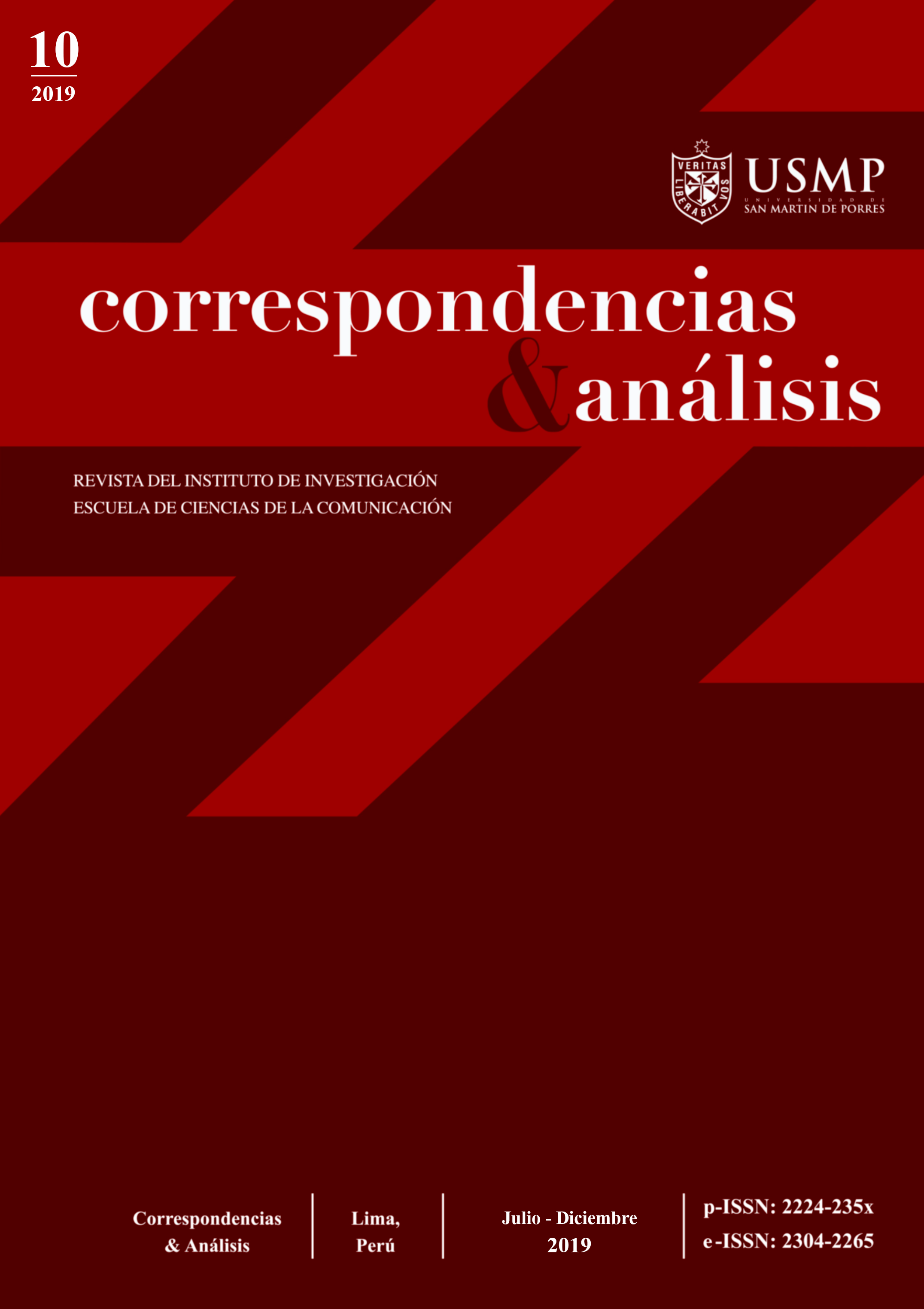






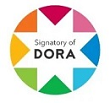
2.png)


